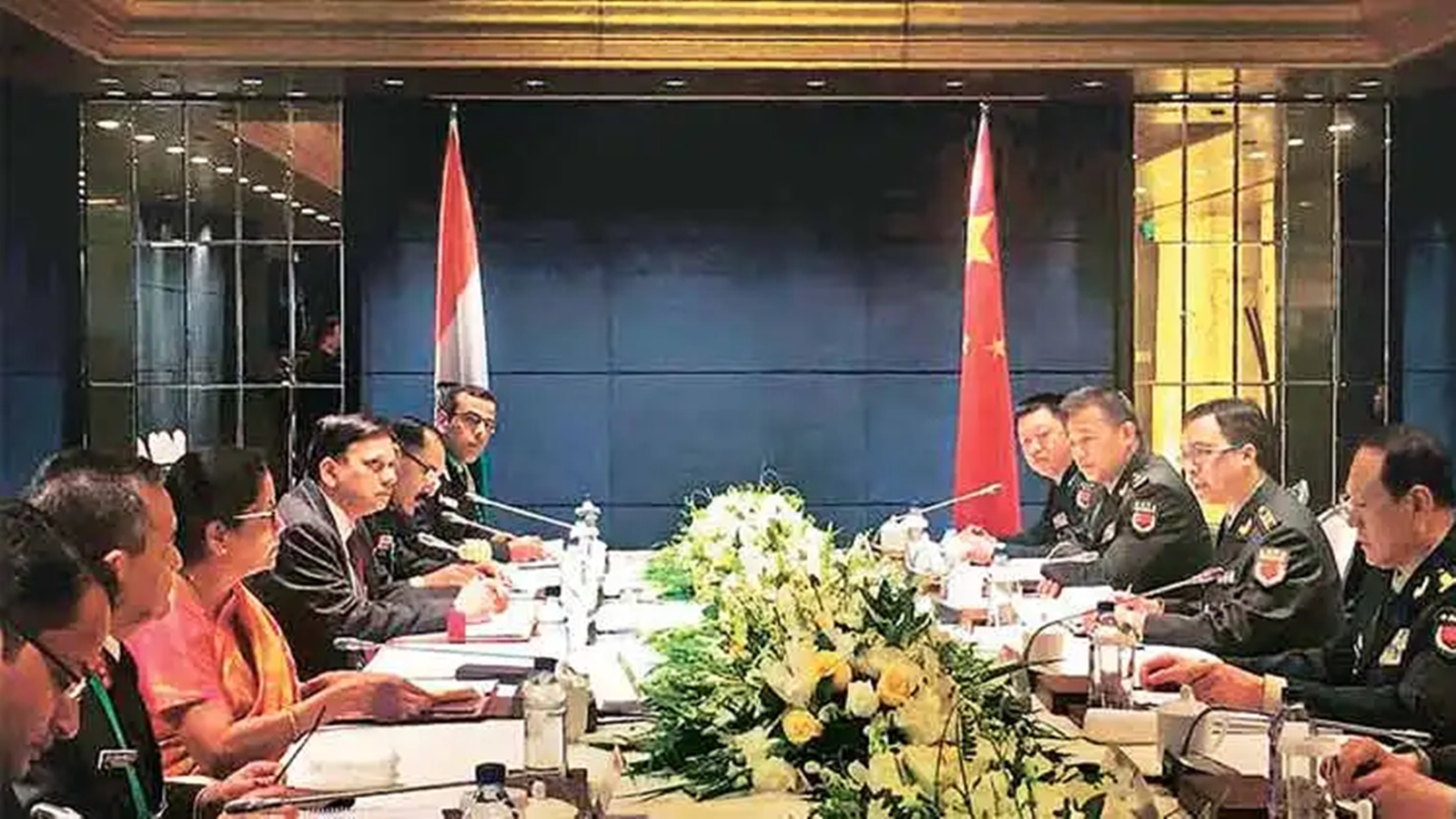Note4Students
From UPSC perspective, the following things are important :
Prelims level: na
Mains level: beauty queens who face body-shaming and criticism

Central idea
The article reflects on the author’s childhood fascination with beauty contests and the absence of plus-size representation, celebrating the recent participation of Miss Nepal as a pivotal moment challenging traditional beauty standards. It critically analyzes the persistent norms in the beauty industry, advocates for a transformative shift towards inclusivity, and emphasizes the empowering impact on children’s dreams, urging a redefinition of beauty beyond conventional ideals.
Key Highlights:
- Personal Reflection on Beauty Contests: The author reflects on childhood memories of watching beauty contests, idolizing winners like Sushmita Sen and Lara Dutta, and the absence of plus-size representation in such contests.
- Evolution of Body Positivity: Over the years, there has been a shift in societal acceptance of diverse body sizes, with the fashion industry offering more inclusive options for plus-sized individuals.
Key Challenges:
- Traditional Beauty Standards: The beauty and glamour industry continues to uphold traditional standards, requiring women, especially pageant participants, to conform to wafer-thin ideals, perpetuating unrealistic beauty norms.
- Ongoing Scrutiny: Even after winning prestigious titles, beauty queens like Miss Universe 2021, Harnaaz Kaur Sandhu, face public scrutiny and body-shaming, highlighting the persistent pressure to maintain certain body standards.
Key Terms and Phrases:
- Chubby Girl Stigma: The author describes her childhood perception that beauty contests were not for her due to societal perceptions of beauty and body size.
- Plus-Size Representation: The article celebrates Miss Nepal, Jane Dipika Garrett, as a significant step toward inclusivity, breaking the mold of traditional beauty standards in beauty pageants.
Key Quotes:
- “In the beauty and glamour industry, things remained the same.”
- “And that it came in the form of a South Asian woman makes it even more special.”
Key Statements:
- Evolution of Fashion Industry: While life has become easier for plus-sized individuals in terms of clothing options, the beauty and glamour industry has been slow to embrace inclusivity, maintaining stringent beauty standards.
- Significance of Miss Nepal’s Participation: Miss Nepal’s confident presence at the Miss Universe stage is hailed as a major step towards inclusivity, breaking the norm of conventional body standards in beauty contests.
Key Examples and References:
- Childhood Influences: The author reminisces about childhood memories of watching beauty contests and the impact of societal beauty standards on her perception.
- Miss Universe 2021 Harnaaz Kaur Sandhu: Highlights the trolling faced by the current Miss Universe for her supposed weight gain, emphasizing the challenges faced by beauty queens even after winning titles.
Key Facts and Data:
- Miss Nepal’s Participation: Miss Nepal, Jane Dipika Garrett, is acknowledged for confidently participating in the Miss Universe contest, challenging conventional beauty norms.
Critical Analysis:
- Evolution of Beauty Standards: The article critically evaluates the persistence of traditional beauty standards within the glamour industry, noting that while progress has been made in the fashion sector, beauty contests remain slow to adapt. It underscores the need for a more dynamic and inclusive definition of beauty, challenging the industry’s resistance to change.
- Impact of Plus-Size Representation: The inclusion of Miss Nepal, Jane Dipika Garrett, is recognized as a significant breakthrough, challenging the long-standing norms of beauty pageants. The analysis delves into the potential ripple effect of her participation, sparking conversations about body diversity and fostering a more inclusive environment within the beauty industry.
- Continued Body-Shaming: The critique extends to the ongoing challenges faced by beauty queens like Miss Universe 2021, Harnaaz Kaur Sandhu, who experiences body-shaming despite her achievements. This highlights the paradox wherein even accomplished individuals in the industry are not immune to societal pressure, emphasizing the need for a cultural shift.
- Empowering Children’s Dreams: The article makes a compelling argument for allowing children, particularly young girls, to dream without restrictive societal norms. It suggests that dismantling conventional beauty ideals is crucial for fostering a generation that embraces diverse forms of beauty and self-expression.
Way Forward:
- Industry-Wide Reform: Advocates for a comprehensive reform within the beauty and glamour industry, urging stakeholders to redefine beauty standards and embrace diversity. This involves challenging established norms, fostering inclusivity in casting, and celebrating a range of body sizes and appearances.
- Educational Initiatives: Proposes educational initiatives that promote body positivity and self-acceptance, targeting both industry professionals and the wider public. By fostering a cultural shift in perceptions of beauty, these initiatives can contribute to dismantling harmful stereotypes and promoting a more accepting society.
- Advocacy for Inclusivity: Encourages influencers, celebrities, and industry leaders to actively advocate for inclusivity, leveraging their platforms to challenge beauty norms. This advocacy is seen as instrumental in driving change within the industry and influencing societal attitudes toward diverse representations of beauty.
- Policy Changes: Calls for the formulation and implementation of policies within the beauty industry that mandate diverse representation, ensuring that beauty contests actively include participants of various body sizes. This structural change aims to create a more equitable and welcoming space for individuals irrespective of their physique.
- Support for Beauty Queens: Stresses the importance of providing ongoing support and protection for beauty queens who face body-shaming and criticism. This includes implementing measures to counter cyberbullying and creating an environment that empowers individuals to embrace their bodies without fear of judgment.
Get an IAS/IPS ranker as your 1: 1 personal mentor for UPSC 2024
Attend Now
Note4Students
From UPSC perspective, the following things are important :
Prelims level: International Atomic Energy Agency (IAEA)
Mains level: nuclear and AI revolutions and the shared challenges in governance, geopolitical dynamics
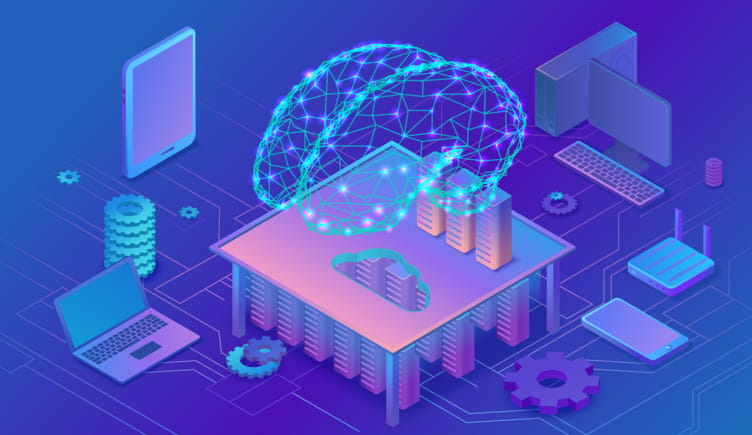
Central idea
The article explores parallels between the nuclear and AI revolutions, emphasizing the shared challenges in governance, geopolitical dynamics, and the need for international cooperation. It underscores the importance of learning from India’s nuclear history to navigate the AI landscape, highlighting potential pitfalls such as exceptionalism.
Key Highlights:
- Historical Parallels: Drawing comparisons between the nuclear and AI revolutions.
- Global Challenges: Identifying shared issues in managing geopolitical rivalry and preventing misuse.
- US-China Dynamics: Highlighting the significance of agreements between the superpowers in AI governance.
- International Governance Proposals: Discussing the idea of an “International Agency for Artificial Intelligence” (IAAI) and the role of the Global Partnership for Artificial Intelligence (GPAI).
- Lessons for India: Emphasizing the importance of learning from India’s nuclear history in navigating the AI landscape.
Key Challenges:
- Advancements Amid Concerns: Addressing the rapid progress in AI despite calls for restrictions.
- US-China Competition: Exploring the impact of US measures to slow China’s AI development.
- Exceptionalism Risks: Warning against India’s tendency to adopt a “third way” and claim exceptionalism in AI development.
Key Terms and Phrases:
- Geopolitics of AI: Examining the political dynamics surrounding artificial intelligence.
- Arms Control Agreements: Exploring proposals for limiting military applications of AI.
- Private Sector Role: Recognizing the increasing importance of the private sector in AI research.
- S&T Sector Reform: Addressing efforts to reform Science and Technology sectors in India.
Key Quotes:
- “The AI revolution threatens an even bigger catastrophe — machines taking over from humanity and enslaving them.”
- “US-China agreements on AI are viewed as critical for the management of the new technological revolution.”
- “Building strong domestic capabilities in AI is critical to making the best out of international cooperation.”
Key Statements:
- Disarmament Realities: Acknowledging the shift from disarmament idealism in nuclear weapons to the challenges of AI governance.
- Strategic Partnerships: Emphasizing the need for India to capitalize on its partnership momentum with the US in critical technologies.
- Caution Against Exceptionalism: Highlighting the risks of India proclaiming exceptionalism in AI development.
Key Examples and References:
- Superpower Dominance: Drawing parallels between the US-Soviet dominance in the nuclear age and the current US-China dominance in AI.
- International Agencies: Referencing the International Atomic Energy Agency (IAEA) and the proposed International Agency for Artificial Intelligence (IAAI).
- Missed Opportunities: Citing historical instances of India missing opportunities in technological cooperation with the US.
Key Facts and Data:
- GPAI Membership: Noting that the Global Partnership for Artificial Intelligence (GPAI) comprises 28 members.
- India’s Hosting Role: Highlighting India’s role in hosting the GPAI summit in Delhi.
- IAEA Establishment: Providing the year of establishment for the International Atomic Energy Agency (IAEA) as 1957.
Critical Analysis:
- Learning from History: Encouraging India to reflect on historical mistakes and actively engage in the global AI landscape.
- Balancing Progress and Ethics: Acknowledging the challenges of balancing technological progress with ethical considerations and international cooperation.
- Provocative Perspectives: Recognizing the thought-provoking comparison between the nuclear and AI revolutions.
Way Forward:
- Leveraging Partnerships: Encouraging India to leverage its partnership with the US in AI and emerging technologies.
- Strengthening Domestic Capabilities: Advocating for a focus on building robust domestic capabilities in AI, involving the private sector.
- Avoiding Exceptionalism: Advising against the temptation of adopting a “third way” and promoting international cooperation and norms in AI development.
Get an IAS/IPS ranker as your 1: 1 personal mentor for UPSC 2024
Attend Now
Note4Students
From UPSC perspective, the following things are important :
Prelims level: Judicial Review
Mains level: constructive dialogue between the legal and political spheres
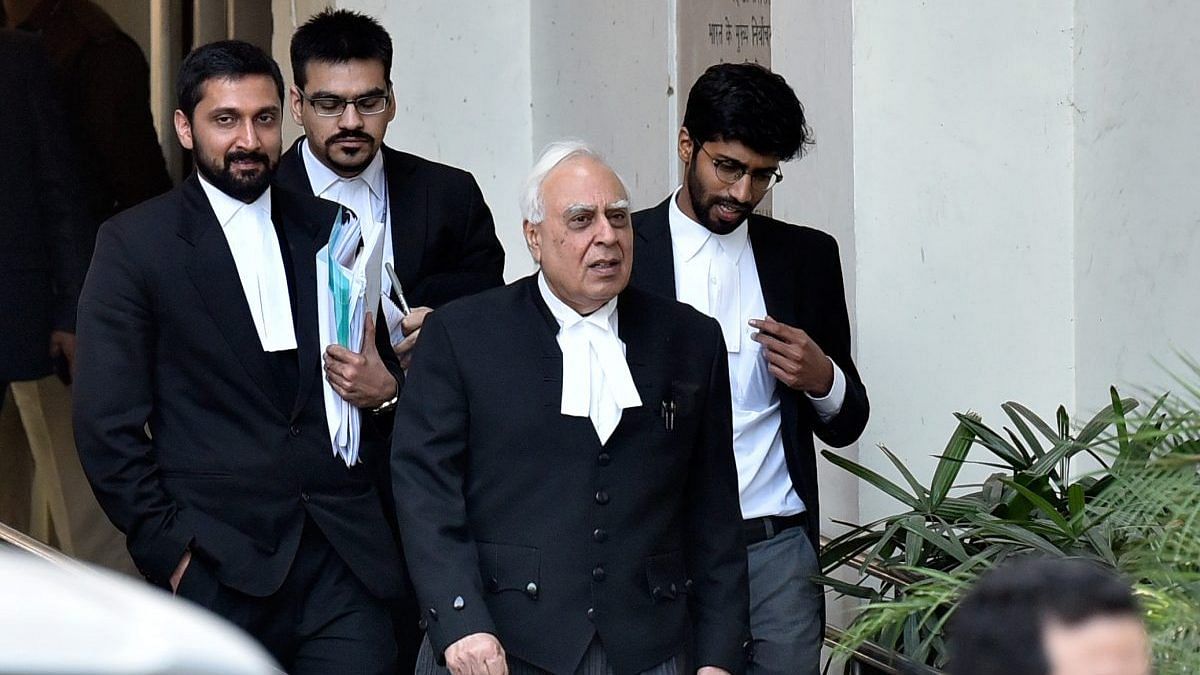
Central idea
The article discusses the challenge of legislators practicing law, particularly the dual role of legislator-lawyers, raising concerns about potential conflicts and the normalization of political intervention in the judiciary. It criticizes Kapil Sibal’s confrontational approach, citing its impact on judicial independence, and emphasizes the delicate balance needed for an independent judiciary amid intertwining political and legal roles.
Key Highlights:
- Dual Roles of Legislator-Lawyers: Legislators practicing law face a dilemma, mixing politics with the legal profession, raising concerns about potential conflicts of interest.
- Normalization of Political Intervention: Allegations by Kapil Sibal suggest a trend of normalizing political intervention in the judiciary, using claims like “courts being on trial” to influence decisions.
- False Equivalence with Emergency Era: Critique based on a false equivalence between the 1975 Emergency and present times, disregarding the unique historical context and the active role of the judiciary.
Key Challenges:
- Political-legal Nexus: The intertwining of political and legal roles, especially in the case of legislator-lawyers, poses challenges to the independence and integrity of the judiciary.
- Confrontational Criticism: Sibal’s confrontational criticism, accusing the judiciary of undergoing a radical shift under external pressures, raises concerns about the impact on public trust and institutional respect.
- Undermining Judicial Independence: Multi-layered actions that undermine judicial independence can erode public faith in legal institutions and potentially influence future verdicts.
Key Terms and Phrases:
- Constitutional Amendments: Reference to the numerous constitutional amendments during the 1975 Emergency.
- Judicial Review: The Supreme Court’s expanded role in reviewing legislation on grounds like constitutional morality, manifest arbitrariness, and transformative constitutionalism.
- Impeachment Proceedings: Mention of the threat of impeachment proceedings against Chief Justice Dipak Misra, perceived as an attempt to pressure the judiciary.
Key Quotes:
- “Courts being on trial” – Described as a sophisticated tool to easily deride any unfavorable decision and question the judiciary’s independence.
- “Institutional sabotage” – Sibal’s comments on institutional sabotage are deemed wildly inaccurate and speculative.
Key Statements:
- False Equivalence Critique: The critique based on a false equivalence between the 1975 Emergency and present times, emphasizing the active role of the judiciary in the current era.
- Confrontational Criticism Impact: Sibal’s confrontational criticism may have a chilling effect on the judiciary’s functioning, potentially influencing future verdicts and legal processes.
- Delicate Balance: Emphasizing the need to respect the delicate balance between political advocacy and judicial independence, especially for legislator-lawyers.
Key Examples and References:
- Defections Cases: Reference to recent Supreme Court decisions concerning defections impacting public trust in the democratic process.
- Impeachment Proceedings Threat: Mention of the perceived attempt to pressure the judiciary through the threat of impeachment proceedings against Chief Justice Dipak Misra.
- Sibal’s Role in Criticism: Highlighting Sibal’s consistent and atypical criticism of Supreme Court verdicts, raising questions about his dual roles.
Key Facts and Data:
- Supreme Court’s Intrusive Role: Acknowledgment of the Supreme Court’s more intrusive role in the past decade, impacting the role of the democratically elected legislature.
- Sibal’s Political Transition: Recognition of Kapil Sibal’s transition from a Congress leader to seeking political space, influencing his views and legal perspectives.
Critical Analysis:
- Intertwining Roles Challenge: The intertwining of political and legal roles challenges the delicate balance needed for an independent judiciary and erodes public trust.
- Ethical Standards for Politician-Lawyers: The need for politicians, especially legislator-lawyers, to adhere to ethical standards and maintain the delicate balance between political advocacy and judicial independence.
- Impact on Democracy: Actions perceived as undermining judicial independence can have a profound impact on democracy, influencing public perception and institutional respect.
Way Forward:
- Respect for Judicial Independence: Emphasizing the crucial need to respect the delicate balance between political advocacy and judicial independence to safeguard the credibility of legal institutions.
- Ethical Considerations: Encouraging politicians, especially those with legal acumen, to consider ethical standards in their dual roles to avoid eroding public faith in the judiciary.
- Public Perception Management: Considering how opinions are presented to manage public perception and maintain institutional respect, ensuring a constructive dialogue between the legal and political spheres.
Get an IAS/IPS ranker as your 1: 1 personal mentor for UPSC 2024
Attend Now
Note4Students
From UPSC perspective, the following things are important :
Prelims level: NA
Mains level: affirmative action policies to empower Dalit and Adivasi

Central idea
The article highlights the contrast between Babasaheb Ambedkar’s vision for inclusive post-colonial India and the current erosion of state support for Dalits and Adivasis under neo-liberalism. It calls for a redefined social justice framework aligned with Ambedkar’s principles, emphasizing inclusive integration into the economic order for marginalized groups.
Key Highlights:
- Democracy’s Vision: Modern democracy aspires to social harmony and reforms, especially for historically marginalized groups like Dalits and Adivasis.
- Ambedkar’s Vision: Babasaheb Ambedkar envisioned post-colonial India as distinct, ensuring equal opportunities for all communities in economic and political development.
- Neo-liberal Impact: Neo-liberal economic development has disrupted traditional support for Dalits and Adivasis from state institutions.
Key Challenges:
- Elite Dominance: Various sectors witness the dominance of social elites, perpetuating the control of the conventional ruling class.
- Tokenistic Representation: Socially marginalized groups experience tokenistic representation in power and privileges.
- Neglect in Neo-liberalism: Concerns of Dalits and Adivasis are neglected in the neo-liberal economic model.
Key Terms and Phrases:
- Neo-liberal Economic Development
- Social Justice Policies
- Tokenistic Presence
- Exploitative Brahmanical Past
- Market Economy
- Crony Capitalist Mode
- Economic Order
- Pluralist and Cooperative Mode
Key Quotes:
- “With the ascent of neo-liberal economic development, the conventional support that Dalits and Adivasis have received from state institutions has derailed.”
- “It is an appropriate time to imagine how the worst-off social groups can become an integral and substantive part of the new economic order.”
Key Statements:
- Neo-liberal Market Critique: The neo-liberal market is alien to ethical values, celebrating the exclusive control of a few corporate bodies and businessmen.
- State’s Role: The state, in the neo-liberal realm, has become a passive associate of big business, deviating from its social responsibilities.
Key Examples and References:
- Ambedkar’s Principles: Reference to Babasaheb Ambedkar’s principles of social justice.
- Neo-liberal Impact: Mention of the neglect of Dalit and Adivasi concerns in the neo-liberal economic model.
Key Facts and Data:
- Impact on Support: Decline in traditional support for Dalits and Adivasis with the rise of neo-liberal economic development.
- Tokenistic Representation: Socially marginalized groups experience tokenistic representation in positions of power.
Critical Analysis:
- Neo-liberal Evaluation: Assessing the impact of the neo-liberal economic model on social justice policies and the neglect of marginalized groups.
- Ambedkar’s Vision: Evaluating Ambedkar’s vision as a corrective measure for making institutions more democratic and representative.
Way Forward:
- Policy Expansion: Expansion of social justice policies to the private economy for democratizing working classes and reducing poverty.
- Inclusive Integration: Integration of Dalits and Adivasis as influential contributors to the market economy.
- Affirmative Action: Adoption of affirmative action policies to empower Dalit and Adivasi groups as industrialists, market leaders, and influencers.
- Redefining Capitalism: Redefinition of capitalism as a pluralist and cooperative mode ensuring substantive participation of marginalized groups.
Get an IAS/IPS ranker as your 1: 1 personal mentor for UPSC 2024
Attend Now
Note4Students
From UPSC perspective, the following things are important :
Prelims level: Brent Oil
Mains level: impact of oil price fluctuations

Central idea
The article highlights the unpredictability of the international oil market, challenging conventional predictions due to a complex interplay of geopolitical, economic, and psychological factors. It underscores the significance of leaders’ personal challenges and decisions, particularly those of Netanyahu, Biden, and MBS, in shaping current market dynamics.
Key Highlights:
- Unpredictability of Oil Market: Predicting the international oil market is challenging due to factors beyond supply, demand, and geopolitics, including exchange rates, financial speculation, and human psychology.
- Recent Market Trends: Despite Middle East tensions, the oil price (Brent) did not sharply increase as expected, standing at $81 on December 1, influenced by factors like stable supply, new discoveries, and a slowdown in Chinese demand.
- Non-fundamental Drivers: The article argues that the current market conditions are shaped more by the psychology of key leaders, including Benjamin Netanyahu, Joe Biden, and Mohammed bin Salman, than the traditional fundamentals of demand and supply.
Key Challenges:
- Psychological Drivers: The dominant market drivers are identified as the personal challenges and state of mind of key leaders, potentially impacting their decisions in response to Middle East turmoil.
- Systemic Position vs. Personal Factors: While leaders hold a systemic position at the cross-section of geopolitics and geoeconomics, their current state of mind is considered more crucial in influencing the petroleum market.
Key Terms and Phrases:
- Brent Oil Price: Mention of the Brent oil price standing at $81 on December 1.
- Systemic Position: Leaders’ roles at the intersection of geopolitics and geoeconomics in the international oil market.
- Psychology of Leaders: The impact of the personal challenges and mental states of leaders like Netanyahu, Biden, and MBS on market dynamics.
Key Quotes:
- “Dominant drivers of market conditions today are not the fundamentals of demand and supply, but the non-fundamentals, the psychology of leaders.”
- “Might we not be experiencing the deceptive calm that precedes a volatile storm?”
Key Statements:
- Fundamentals vs. Non-fundamentals: The article questions whether the current market conditions are sustainable, highlighting the potential influence of leaders’ psychology over traditional supply and demand fundamentals.
- Deceptive Calm: Raises the possibility that the calm in the oil market may be deceiving, suggesting an impending volatile shift.
Key Examples and References:
- Recent Middle East Tensions: Refers to the attack by the Al Qassam brigade and the potential impact on oil prices, contrasting with the unexpected stable market conditions.
- US Troops Casualties: Hypothetical scenario of US troops being killed in Syria and Iraq, prompting debates on military responses with implications for oil prices.
Key Facts and Data:
- Oil Discoveries: Mentions recent oil discoveries in Brazil and Guyana, along with increasing US shale oil production.
- Chinese Economic Slowdown: Highlights the slowing demand for oil due to the slackening Chinese economy.
Critical Analysis:
- Leaders’ Influence: Emphasizes the potential impact of leaders’ personal challenges and decisions on the trajectory of the petroleum market, suggesting a shift from traditional market dynamics.
- Unpredictability of Oil Market: Acknowledges the difficulty in predicting the oil market, attributing it to a combination of fundamental and non-fundamental factors.
Way Forward:
- Contingency Actions: Encourages decision-makers to contemplate contingency actions based on two alternative scenarios: rising oil prices or a significant drop, suggesting strategic petroleum reserve buildup and streamlined trading norms for arbitrage opportunities in anticipation.
- Strategic Petroleum Reserves: Given the uncertainty in the oil market, India should accelerate efforts to build and expand its strategic petroleum reserves, providing a buffer against potential supply disruptions or price volatility.
- Strategic Collaboration: Explore collaborative efforts with key oil-producing nations to strengthen energy security, fostering partnerships that ensure stable and reliable oil supplies.
- Investment in Renewable Energy: Accelerate investments in renewable energy sources to reduce dependence on volatile oil markets, promoting sustainability and environmental conservation.
- Energy Efficiency Measures: Implement stringent energy efficiency measures across industries and sectors to mitigate the impact of oil price fluctuations and contribute to a more resilient energy landscape.
Get an IAS/IPS ranker as your 1: 1 personal mentor for UPSC 2024
Attend Now
Note4Students
From UPSC perspective, the following things are important :
Prelims level: NALSA
Mains level: Centre of Excellence for transgender healthcare
Get an IAS/IPS ranker as your 1: 1 personal mentor for UPSC 2024
Attend Now
Note4Students
From UPSC perspective, the following things are important :
Prelims level: UNLF peace accord
Mains level: Successful peace deals in Northeastern states
Central idea
In a volatile state like Manipur, peace agreements can be challenging to implement because of the multiplicity of stakeholders and their divergent interests and grievances
Key Highlights:
- Welcoming a Milestone Accord: Recent peace accord between UNLF in Manipur and the government of India viewed positively for its potential impact on regional normalcy.
- Regional Peace Trends: Successful peace deals in Northeastern states like Mizoram, Tripura, and Shillong, along with significant progress in Assam through accords with separatist groups.
Key Challenges:
- Lurking Threat of Looted Arms: The presence of approximately 4,500 looted arms in various hands poses a substantial threat to the journey towards lasting peace.
- Complexities in UNLF Accord: Lack of clarity on the terms of the UNLF peace accord and potential complications arising from the involvement of militants in ethnic conflicts.
- Diverse Demands and Historical Grievances: Reconciling diverse demands and historical grievances from various ethnic and tribal communities in Manipur emerges as a complex challenge.
Key Terms/Phrases:
- Peace Dynamics: Peace accord, insurgency, Suspension of Operations (SoO) agreement.
- Challenges in Reconciliation: Multiplicity of stakeholders, ethnic conflicts, geopolitical factors.
- Key Players: Separatist groups, militant factions, political negotiations.
Key Quotes/Statements:
- “Any peace initiative is welcome — more so if it deals with a militant group abjuring arms to join the mainstream.”
- “The biggest hurdle in the road to peace remains the floating looted arms numbering around 4,500 in various hands.”
- “Diverse demands from various ethnic and/or tribal communities… making it hard to arrive at a resolution that satisfies all parties.”
Key Examples/References:
- Positive Precedents: Peace accords in Mizoram, Tripura, Shillong, and Assam leading to regional normalization.
- NSCN-IM Accord: The signing of an accord by the National Socialist Council of Nagaland — Isak-Muivah (NSCN-IM) in 2015.
- Militant Factions in UNLF: Presence of factions like the Pambei faction advocating for dialogue.
Key Facts/Data:
- Ban Extension: The ban extension on nine Meiti extremist groups, including UNLF and Manipur People’s Army (MPA).
- Surrender Statistics: Tripartite accords initiated by the Centre since 2014 leading to 6,112 insurgents surrendering.
- Arms Challenge: Presence of 4,500 looted arms posing a significant challenge to peace efforts.
Critical Analysis:
- Distrust and External Influences: Challenges in implementing peace agreements due to historical distrust, external influences, and divergent interests.
- Fragility of Agreements: The fragility of peace agreements highlighted by disruptions caused by extremist factions or splinter groups.
- State’s Volatility: Manipur’s volatile state demands comprehensive efforts for lasting peace.
Way Forward:
- Addressing Arm Threat: Focus on resolving the issue of looted arms to ensure a major cause of concern is adequately addressed.
- Transparent Communication: Clearly communicate the terms of the UNLF peace accord to manage expectations and foster understanding.
- Holistic Approach: Focus on political negotiations, rehabilitation of displaced individuals, and dismantling militant-controlled zones.
- Inclusive Engagement: Engage all political parties, appoint a political negotiator, and seek a comprehensive agreement that satisfies various stakeholders.
Get an IAS/IPS ranker as your 1: 1 personal mentor for UPSC 2024
Attend Now
Note4Students
From UPSC perspective, the following things are important :
Prelims level: Na
Mains level: India's approach to covert operations to align with international norms.
-1596348923.png?auto=format%2Ccompress&fmt=webp&fit=max&format=webp&q=70&w=400&dpr=2)
Central idea
The article explores the credibility crisis faced by India in the realm of covert operations, focusing on recent legal challenges and a lack of trust with the U.S. The key themes include the impact on international relations, the dynamics of intelligence sharing, and the need for a balanced diplomatic approach to maintain India’s global image.
Key Highlights:
- Espionage and Covert Operations: Recent U.S. indictment against Nikhil Gupta for targeting Khalistani separatists in North America.
- Credibility Challenges: Multiple legal challenges to Indian intelligence operations abroad, raising questions about New Delhi’s credibility.
- Global Reach of Indian Security: Operations against Khalistani and Pakistani operatives in various countries, showcasing India’s security establishment’s capabilities.
Key Challenges:
- Credibility Crisis: Impact on New Delhi’s credibility in covert capacities and public messaging.
- Trust Deficit: Lack of trust and information sharing between India and the U.S.
- Diplomatic Balancing Act: Juggling international engagements and addressing concerns from western allies.
Key Terms/Phrases:
- Covert Operations Dynamics: Espionage, intelligence, and covert operations.
- Targeted Groups: Khalistani separatists, extradition, extra-judicial actions.
- International Relations: Trust deficit, bilateral ties, Five Eyes intelligence partnership.
Key Quotes/Statements:
- “In the shadowy world of espionage, intelligence and covert operations, the only rule is to never get caught carrying out a mission.”
- “Trust is still an issue.”
- “India’s double standard in its international engagements.”
Key Examples/References:
- Legal Battles: Forcible return of UAE princess, Latifah, and the “attempted kidnap” of Mehul Choksi.
- Convictions and Challenges: Conviction of Indian naval officers in Qatar for espionage.
Key Facts/Data:
- Alleged Operations: Involvement of Indian agencies in operations against Khalistani and Pakistani operatives globally.
- Information Gaps: Lack of full information sharing between the U.S. and India regarding the alleged conspiracy.
Critical Analysis:
- Credibility Concerns: Questions raised about India’s credibility in covert operations and international engagements.
- Trust Dynamics: Ongoing trust deficit between India and the U.S. impacting information sharing.
- Image Management: Balancing India’s image globally, considering hard and soft power approaches.
Way Forward:
- Transparent Investigations: Address credibility concerns through thorough and transparent investigations.
- Enhanced Information Sharing: Strengthen trust and information-sharing mechanisms with international partners.
- Adaptive Diplomacy: Evaluate and adjust India’s approach to covert operations to align with international norms.
- Diplomatic Outreach: Enhance diplomatic efforts to manage relationships with western allies and neighbors.
Get an IAS/IPS ranker as your 1: 1 personal mentor for UPSC 2024
Attend Now
Note4Students
From UPSC perspective, the following things are important :
Prelims level: na
Mains level: How Henry Kissinger tricked the world

Central idea
Henry Kissinger’s enigmatic legacy, spanning 80 years, encapsulates both admiration and criticism, depicting him as a “miracle man” and a “confidence man.” His influence on post-World War II global affairs prompts reflection on the intricate dynamics of power and diplomacy, posing ethical questions about leadership.
Key Highlights:
- Henry Kissinger’s Impact: Henry Kissinger, a pivotal figure in post-World War II global affairs, has left an indelible mark, often hailed as a “miracle man” but critiqued as a “confidence man.”
- Confidence Man Persona: Described as immensely talented and charming, Kissinger projected an aura of indispensability, successfully ingraining himself in the power structures globally for nearly 80 years.
- Ambiguous Morality: The term “confidence man” encapsulates Kissinger’s ability to project charm while potentially having a morally hollow core, raising questions about the ethical dimensions of his actions.
- Longevity and Influence: Despite controversies and criticisms, Kissinger’s influence endured, evident in his 100th birthday gala hosting the world’s elite and maintaining access to leaders like President Xi even in his later years.
Key Challenges:
- Moral Ambiguity: Kissinger’s approach to power and diplomacy raises ethical concerns, as he seemed more inclined towards realpolitik and a will to power than moral considerations.
- Impact on Global Conflicts: The decisions and actions condoned by Kissinger, such as the delayed peace agreement in Vietnam and support for controversial military interventions, are linked to significant human suffering and casualties.
Key Phrases:
- Confidence Man: A term used to characterize Kissinger’s charismatic yet potentially morally questionable persona, emphasizing his knack for presenting himself as indispensable.
- Will to Power: Kissinger’s approach to diplomacy is seen as a will to power, prioritizing the acquisition and maintenance of power as a measure of success.
Key Quotes:
- Eqbal Ahmad’s Assessment: “Kissinger was not a miracle man. He was a confidence man.”
- Kissinger’s Perspective: “There are two kinds of realists: Those who manipulate facts and those who create them.”
Key Examples and References:
- Crimes and Controversies: Kissinger’s involvement in delaying the Vietnam Peace Agreement, bombing of Cambodia, ignorance of the East Pakistan genocide, and support for interventions like in East Timor and Argentina.
- Greg Grandin’s Estimate: Historian Greg Grandin approximates around four million deaths attributable to Kissinger’s decisions.
Critical Analysis:
- Moral Objectivity: Kissinger’s approach challenges the conventional moral objectives associated with realism, portraying power as the ultimate measure of success.
- Survival Mentality: The analysis suggests that Kissinger’s worldview was shaped by a fear of powerlessness, instilled by the European experience, driving him to prioritize power at any cost.
Way Forward:
- Reflection on Morality: Evaluating the moral implications of diplomatic actions, emphasizing a balance between realism and ethical considerations in global affairs.
- Global Accountability: Reflecting on Kissinger’s legacy prompts a broader discussion on holding powerful figures accountable for decisions that impact millions of lives.
Get an IAS/IPS ranker as your 1: 1 personal mentor for UPSC 2024
Attend Now
Note4Students
From UPSC perspective, the following things are important :
Prelims level: na
Mains level: Legal Language Simplification
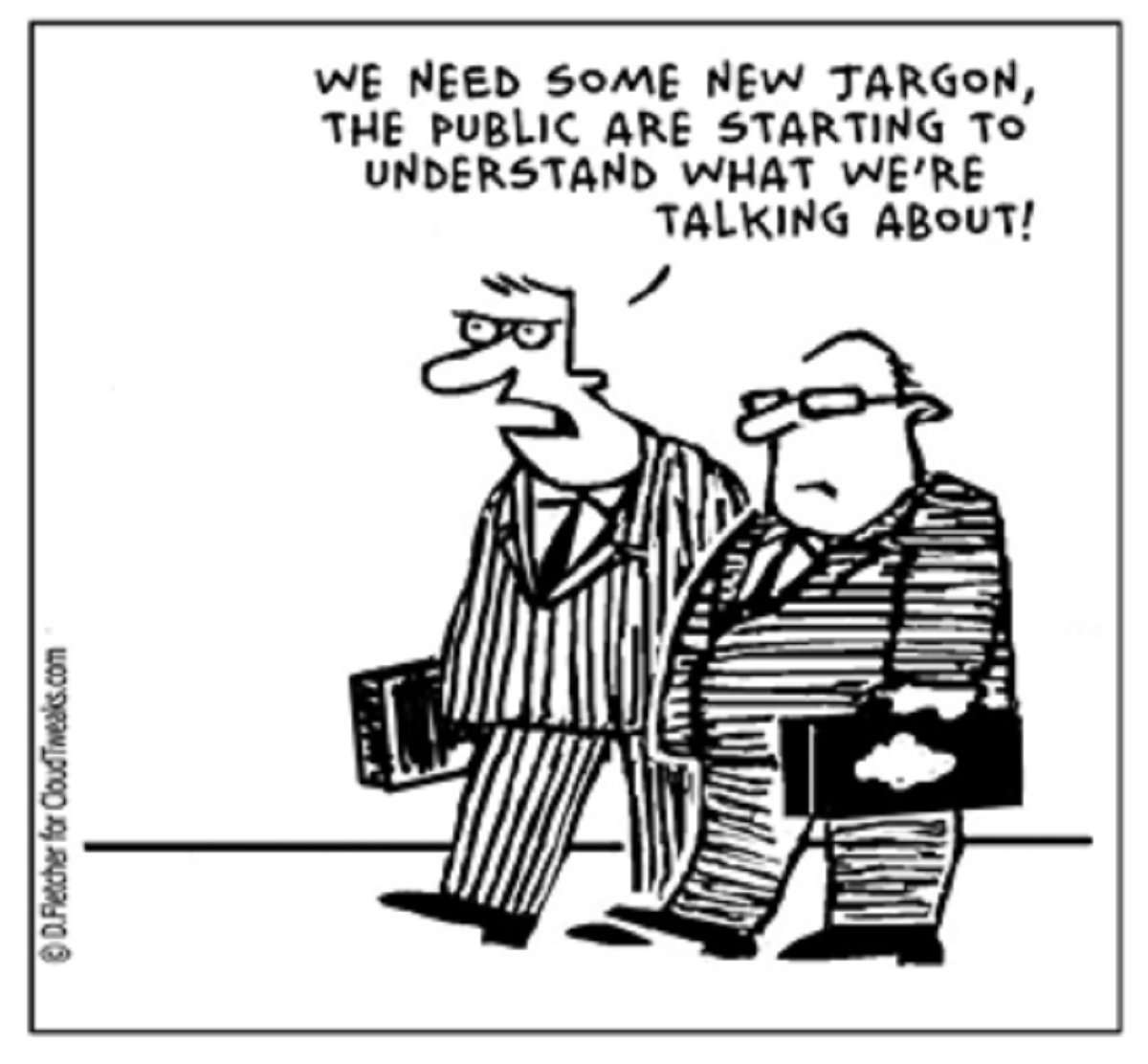
Central idea
The Indian government, led by Prime Minister Narendra Modi, is actively simplifying legal language to promote “Access to Justice,” making legal texts more understandable for every citizen. This strategic initiative, aligned with constitutional principles, addresses historical ambiguities and leverages technology to enhance accessibility, contributing to global legal recognition and fostering a transformative journey toward inclusive justice.
Key Highlights:
- Legal Language Simplification: The Indian government, led by Prime Minister Narendra Modi, is undertaking a mission to simplify legal language, aligning with the vision of “Access to Justice” and aiming to make legal texts more accessible to the common citizen.
- Constitutional Principle: The initiative reflects the constitutional principle that legal language should be understandable to every citizen, emphasizing the importance of ensuring citizens comprehend their rights and responsibilities.
- Correction of Ambiguities: The government is addressing historical ambiguities in legal language, such as those in Sections 213 and 214 of the IPC, to enhance legal precision and effective enforcement, eliminating potential loopholes.
- Global Recognition: The government’s commitment to simplifying legal language has gained international recognition, positioning India as a forward-thinking adopter of progressive measures for legal accessibility.
- Digital Transformation: The simplification efforts align with the Digital India campaign, leveraging technology to enhance accessibility, with online platforms and digital resources making legal information more readily available.
Key Challenges:
- Historical Complexities: Addressing historical intricacies in legal language poses a challenge, requiring thorough examination and correction of ambiguities that have persisted over time.
- Public Engagement: While seeking public input in the simplification process is a positive step, ensuring effective public engagement and capturing diverse perspectives can be challenging.
Key Phrases:
- Access to Justice: The overarching vision guiding the simplification initiative, aiming to remove barriers of legal complexity that hinder the common citizen’s understanding of legal texts.
- Legal Empowerment: The goal of simplification extends beyond language, aiming to empower citizens with legal knowledge, fostering a sense of legal empowerment among the diverse population.
Key Quotes:
- “We must see that the constitution is not only passed by the Constituent Assembly but that it is also worked by the common people of the country.” – B R Ambedkar
- “The government envisions a legal landscape where language is not a barrier but a bridge to justice.”
Critical Analysis:
- The reduction in legal disputes due to misunderstandings and misinterpretations underscores the positive impact of the simplification initiatives in fostering a clearer legal framework.
Way Forward:
- Continue the integration of plain language drafting principles into legal education to nurture a generation of legal professionals capable of navigating legal intricacies with clarity and precision.
- Sustain efforts to engage the public in the simplification process, ensuring diverse perspectives are considered for comprehensive legal accessibility.
- Monitor and evaluate the impact of simplification on reducing legal disputes and enhancing India’s global economic competitiveness.
- Explore additional measures, such as comprehensive glossaries in multiple languages, to further enhance the understanding of legal language among citizens.
Get an IAS/IPS ranker as your 1: 1 personal mentor for UPSC 2024
Attend Now

Central idea
The central idea underscores the need for a bottom-up approach, private sector engagement, and innovative models like the SPARK project to bring about attitudinal shifts, economic opportunities, and social recognition for persons with disabilities, ultimately fostering a more equitable and inclusive global development agenda.
Key Highlights:
- Disability Intersectionality: Disability intersects with social, economic, and gender vulnerabilities, necessitating comprehensive consideration for equitable action.
- Global Disability Statistics: Globally, 1.3 billion people live with disabilities, with 80% in developing countries and 70% residing in rural areas.
- Exclusionary Systems: Current systems designed for non-disabled persons lead to exclusion, resulting in higher instances of poverty, limited education access, and social discrimination for people with disabilities.
- Importance of Language: The distinction between “for” and “by” in disability inclusion is crucial. Inclusion should involve persons with disabilities in the process, not just for them.
- Economic Impact: Inclusion of persons with disabilities in the economy could boost global GDP by 3% to 7%, emphasizing the economic benefits of inclusion.
- Employment Scenario: Current employment scenarios limit job opportunities for persons with disabilities, contradicting the UN Convention on the Rights of Persons with Disabilities.
- Rural Challenges: Persons with disabilities in rural areas face heightened challenges, including limited access to education, employment, and exclusion from developmental schemes.
- UDID Card and Government Schemes: In India, UDID cards and various government schemes exist for persons with disabilities, emphasizing the need for awareness and last-mile connectivity of benefits.
- SPARK Project: The ILO and IFAD’s SPARK project focuses on disability inclusion in rural areas, with Disability Inclusion Facilitators (DIFs) leading awareness and engagement efforts.
Key Challenges:
- Awareness and Accessibility: Limited awareness and accessibility to government benefits for persons with disabilities, particularly in rural areas.
- Societal Perception: Persons with disabilities often face societal perceptions that view them as objects of charity rather than active participants in decision-making processes.
- Climate Calamities: Rural areas with high agricultural dependence face increased risks from climate calamities, further impacting persons with disabilities.
- Private Sector Engagement: While a robust legal framework exists, greater engagement with the private sector is crucial for promoting the employment of persons with disabilities.
Key Quotes:
- “For is often used when a person is receiving something and By is to identify the agent performing an action.”
- “Disability inclusion is rooted in assuring the rights of persons with disabilities and recognizing the economic benefits of inclusion.”
- “It is about time that the voices and needs of persons with disabilities be prioritized at the center of the global development agenda.”
Key Terms:
- Intersectionality: The interconnected nature of social categorizations such as disability, gender, and economic status, which creates overlapping and interdependent systems of discrimination or disadvantage.
- UDID Card: Unique ID for persons with disabilities, a card established as part of the Rights of Persons with Disabilities Act (2016) in India.
- Sustainable Development Goals (SDGs): A collection of 17 global goals set by the United Nations in 2015 as a universal call to action to end poverty, protect the planet, and ensure prosperity for all.
- Disability Inclusion Facilitators (DIFs): Individuals trained to engage with communities, raise awareness, and identify barriers to inclusion for persons with disabilities.
Key Phrases:
- Economic Consequences of Exclusion: Refers to the impact on the global GDP when excluding persons with disabilities from the workforce, as highlighted in the ILO study.
- Last-Mile Connectivity: Ensuring the final leg of delivery or accessibility of government benefits to the remotest areas, especially in the context of persons with disabilities.
- Social Development Dimension: Viewing disability inclusion not only as a matter of rights but also as a crucial aspect of social development.
Key Statements:
- “Disability as an identity and entity exists at the intersection of multiple vulnerabilities — social, economic, and gender — with each facet requiring careful consideration when conceptualizing action for equity.”
- “The inclusion of persons with disabilities into the economy can help boost global GDP between 3% to 7%, as per the study by the International Labour Organization.”
- “It is about time that the voices and needs of persons with disabilities be prioritized at the center of the global development agenda.”
Key Examples and References:
- The SPARK Project: Implemented by the ILO and IFAD, the SPARK project in Maharashtra demonstrates successful inclusion efforts led by persons with disabilities.
- International Labour Organization (ILO): Referenced for its study on the economic consequences of excluding persons with disabilities from the workforce.
- Rights of Persons with Disabilities Act (2016): Legislation in India that includes provisions for UDID cards and various schemes for persons with disabilities.
Key Facts:
- Global Disability Statistics: Approximately 1.3 billion people globally live with some form of disability, with 80% residing in developing countries.
- Rural Challenges: In India, 70% of persons with disabilities live in rural areas, facing greater challenges in accessing education and employment opportunities.
- Economic Impact: Inclusion of persons with disabilities in the workforce could boost global GDP by 3% to 7%, according to the ILO study.
Key Data:
- Percentage of Global Population with Disabilities: 1.3 billion people, equivalent to nearly the entire population of India.
- Percentage of Persons with Disabilities in Developing Countries: 80%, with 70% residing in rural areas.
- Impact on Global GDP: Inclusion of persons with disabilities can boost global GDP by 3% to 7%, according to the ILO.
Critical Analysis:
- Bi-Directional Link: Evidence shows a connection between disability, poverty, nutrition, and hunger, emphasizing the need for inclusive opportunities and employment in rural areas.
- Societal Perceptions: Persons with disabilities often face societal perceptions that view them as objects of charity rather than active participants in decision-making processes.
- Private Sector Engagement: The importance of engaging the private sector and building confidence in hiring workers with disabilities is highlighted.
Way Forward:
Prioritize the voices and needs of persons with disabilities at the core of the global development agenda for genuine inclusion and social justice. This involves awareness, engagement, and a bottom-up approach to disability inclusion, especially in rural areas.
Get an IAS/IPS ranker as your 1: 1 personal mentor for UPSC 2024
Attend Now

Central Idea:
The Indian state faces a paradox of being too burdensome in bureaucracy yet too small in terms of personnel. The focus should shift from the size of the state to addressing issues of perverse incentives, skill gaps, and institutional constraints for effective governance.
Key Highlights:
- Bureaucratic Challenges: Setting up businesses or homes in urban areas in India involves navigating a complex web of licenses, permits, and clearances, reflecting the bureaucratic thicket that hinders efficiency.
- State Size Discrepancy: While India has a relatively small number of civil servants per capita and a lower public sector share in employment, it struggles with challenges in providing essential services and infrastructure.
- Perverse Incentives: The root cause of governance inefficiency lies in perverse incentives within public institutions, hindering policymakers and officials from making and implementing effective policies.
- Need for Delegation: Lessons from countries like Australia and Malaysia suggest that separating policymaking and implementation responsibilities expedites execution and encourages innovations, improving program outcomes.
- Technocratic Gap: The lack of technocratic skills at the policymaking level results in substantial outsourcing to consultancy firms, revealing a gap that needs to be addressed for effective governance.
Key Challenges:
- Technocratic Skill Deficiency: The Indian bureaucratic system lacks technocratic skills, leading to significant outsourcing of crucial tasks to consultancy firms, highlighting a need for internal capability building.
- Policy Failures: Both proponents and critics of a larger state miss the fundamental issue of perverse incentives and skill gaps, contributing to policy failures across various sectors.
Key Phrases:
- People-Thin, Process-Thick State: Describes the Indian state as lacking in personnel but burdened with complex processes, emphasizing the need for a shift in focus from size to efficiency.
- Perverse Incentives: Highlights the negative motivations within public institutions that hinder sound policymaking and implementation.
Key Quotes for good marks:
- “The main problem, however, is the perverse incentives created by public institutions and the skill gap among officials.”
- “Both sides to the debate are missing something fundamental.”
Anecdotes:
- National Highways Authority of India: The example of the NHAI, where policymaking and execution are separated, showcases the effectiveness of delegation in reducing delays and cost overruns.
Critical Analysis:
- Audits and Oversight: The focus on compliance over policy objectives due to narrowly scoped audits by oversight agencies hampers effective decision-making, causing delays and disputes.
Way Forward:
Implementing institutional reforms, such as separating policymaking and implementation, enhancing technocratic skills, and sensitizing oversight agencies to contextual policy decisions, can improve state capability.
Get an IAS/IPS ranker as your 1: 1 personal mentor for UPSC 2024
Attend Now
Note4Students
From UPSC perspective, the following things are important :
Prelims level: na
Mains level: India's nimble and forthright diplomacy
Get an IAS/IPS ranker as your 1: 1 personal mentor for UPSC 2024
Attend Now
Note4Students
From UPSC perspective, the following things are important :
Prelims level: PLI Scheme
Mains level: sustained economic recovery
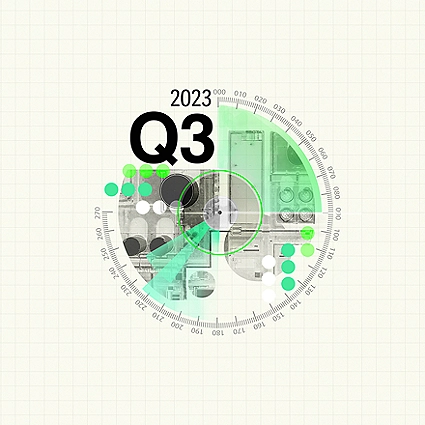
Central idea
The Indian growth story remains a beacon of hope. The economy is unlikely to slow down in line with other major economies of the world as the government continues to undertake reforms.
Key Highlights:
- Economic Growth: The Indian economy expands by 7.6% in Q2, challenging doubts on post-pandemic macroeconomic resilience.
- Manufacturing Surge: The manufacturing sector grows robustly at 13.9%, indicating positive outcomes from policy initiatives and credit stabilization.
- Corporate Health: Corporate books show impressive bottom-line growth, reflecting broad-based economic recovery.
- Capex Intentions: Historic capex intentions with new investment announcements reaching Rs 37 lakh crore in 2022-23, signifying increased private sector participation.
- Agricultural Transformation: Agriculture grows by 1.2%, with a shift towards allied activities reducing dependence on traditional farm income.
- Banking Support: Banks increasingly finance the entire agri value chain, with agri loans growing by 15.4% in 2022-23.
- Services Sector Moderation: Services sector growth moderates to 5.8%, influenced by low growth in trade, hotels, transport, and communication.
- Consumption Patterns: Private consumption decelerates to 3.1%, possibly impacted by higher inflation, expected to pick up in the third quarter.
- Government Investments: Government consumption and investments register healthy growth, with gross fixed capital formation increasing by 11%.
Key Challenges:
- Global Growth Risk: Risk of softer global growth, especially in the US and Euro region, may impact India’s exports and economic momentum.
- Consumer Sentiment Woes: Consumer sentiments in major economies worsen amid growing uncertainty, potentially affecting global trade.
Key Terms and Phrases:
- Macro-economic Resilience: India’s ability to withstand and recover from economic shocks.
- PLI Scheme: Production-Linked Incentive scheme aimed at boosting manufacturing in specific sectors.
- Corporate Balance Sheets: Financial health and performance of businesses.
- Capex Intentions: Plans and commitments for capital expenditures.
- Allied Activities in Agriculture: Diversification into areas like dairy and fisheries within the agriculture sector.
- Gross Fixed Capital Formation: Investment in fixed assets contributing to economic growth.
- Consumer Sentiments: Public attitudes and feelings regarding economic conditions and spending.
- Global Trade Headwinds: Challenges and obstacles affecting international trade.
Key Quotes:
- “The Indian growth story remains a beacon of hope.”
- “The economy is unlikely to slow down in line with other major economies of the world.”
Key Statements:
- Manufacturing sector growth indicates an uptick triggered by government expenditure, policy initiatives, and credit stabilization.
- Agriculture’s increased focus on allied activities reduces dependence on traditional farm income.
- Historic capex intentions and private sector participation signal a strong economic recovery.
Key Examples and References:
- New investment announcements hitting a high of Rs 37 lakh crore in 2022-23, showcasing increased private sector participation.
- Agriculture loans by banks increase by 15.4% in 2022-23, indicating growing support for the agri value chain.
Key Facts and Data:
- Indian economy grows by 7.6% in Q2, marking two consecutive quarters of 7% plus growth.
- Manufacturing sector grows at a robust 13.9%, reaching a nine-quarter high.
- New investment announcements hit Rs 37 lakh crore in 2022-23, compared to Rs 20 lakh crore in 2021-22.
- Agriculture grows by 1.2% in Q2, with allied activities contributing significantly.
Critical Analysis:
- The robust economic growth raises questions about the accuracy of forecasts doubting India’s resilience.
- The manufacturing sector’s strong performance indicates positive outcomes from government initiatives and policies.
- Private sector participation in capex reflects confidence in the economic recovery.
- Increased focus on allied activities in agriculture showcases a shift in the sector’s dynamics.
- The potential risk of softer global growth highlights external factors influencing India’s economic trajectory.
Way Forward:
- Continued government reforms and support for economic growth.
- Monitoring and addressing potential risks from softer global growth.
- Sustaining the positive momentum in manufacturing and capex through policy measures.
- Emphasizing the role of allied activities in agriculture for a diversified income base.
- Nurturing consumer sentiments and encouraging private consumption for sustained economic recovery.
Get an IAS/IPS ranker as your 1: 1 personal mentor for UPSC 2024
Attend Now
Note4Students
From UPSC perspective, the following things are important :
Prelims level: G20
Mains level: momentum of inclusivity and global collaboration
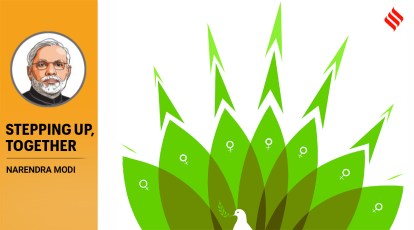
Note for students: The writer is Prime Minister of India hence there is high possibility UPSC may use this for prelims, mains, interview and essay be aware and alert for these kind of highly valuable articles.
Central idea
India’s G20 presidency prioritized inclusivity, sustainable development, and climate action, offering an alternative to GDP-centric progress. The emphasis on the Global South’s concerns and achievements in digital infrastructure collaboration marked a departure from the status quo.
Key Highlights:
- India’s G20 presidency focused on inclusive, ambitious, action-oriented, and decisive strategies.
- Inclusivity was a central theme, integrating the African Union and emphasizing the Global South’s concerns.
- India introduced the Digital Public Infrastructure (DPI) and a Green Development Pact for sustainable progress.
- The G20 2023 Action Plan targeted SDGs, with a special emphasis on health, education, gender equality, and environmental sustainability.
- Commitment to climate justice, equity, and significant financial support for developing countries were key features.
Key Challenges:
- Addressing conflicts, competition, and declining multilateralism.
- Balancing development cooperation amid geopolitical tensions.
- Navigating the transition from GDP-centric to human-centric progress.
- Mobilizing substantial resources for climate and development financing.
Key Terms:
- Vasudhaiva Kutumbakam
- New Delhi Leaders’ Declaration (NDLD)
- Sustainable Development Goals (SDGs)
- Digital Public Infrastructure (DPI)
- Green Development Pact
- Lifestyles for Sustainable Development (LiFE)
- Nationally Determined Contributions (NDCs)
- Multilateral Development Banks
Key Phrases:
- “One Earth, One Family, One Future”
- “Voice of the Global South Summit”
- “People’s Presidency”
- “Jan Bhagidari” (People’s participation)
- “Digital Public Infrastructure Repository”
- “Tripling of global renewable energy capacity by 2030”
- “Climate justice and equity”
- “Women’s Reservation Bill 2023”
| Key Quotes
For value addition of mains answer they may come as essay topics as they are written by pm of our country. UPSC is very keen on selecting such type of content be focused and revise this article multiple times.
“The interests of the few had to give way to the aspirations of the many.”
“For the first time, there was a recognition of the quantum jump needed in the magnitude of development financing.”
“It revitalised multilateralism, amplified the voice of the Global South, championed development, and fought for the empowerment of women everywhere.”
|
Key Statements:
- “Inclusivity has been at the heart of our presidency.”
- “India sought to offer the world an alternative to the status quo, a shift from a GDP-centric to human-centric progress.”
- “India’s Women’s Reservation Bill 2023 epitomizes our commitment to women-led development.”
- “India’s G20 achieved 87 outcomes and 118 adopted documents, a marked rise from the past.”
Key Examples and References:
- The inclusion of the African Union in the G20.
- ‘Voice of the Global South Summit.’
- Digital innovations like Aadhaar, UPI, and Digilocker.
- G20’s emphasis on climate-conscious consumption and planet-friendly production.
- India’s leading role in UN reforms.
Key Facts:
- G20 achieved 87 outcomes and 118 adopted documents during India’s presidency.
- The G20 Declaration calls for tripling global renewable energy capacity by 2030.
- India’s Women’s Reservation Bill 2023 reserves one-third of parliamentary and state legislative assembly seats for women.
- Developing countries require $5.9 trillion to fulfill their NDCs by 2030.
Key Data:
- The G20 reached 1.4 billion citizens through “Jan Bhagidari” events.
Critical Analysis:
India’s G20 presidency successfully navigated challenges, emphasizing inclusivity, sustainable development, and climate action. The presidency revitalized multilateralism and amplified the voice of the Global South, marking a significant shift in the global narrative.
Way Forward:
- Sustaining the momentum of inclusivity and global collaboration.
- Implementing the G20 2023 Action Plan for accelerated progress on SDGs.
- Continued advocacy for climate justice, equity, and financial support for developing nations.
- Strengthening the role of Multilateral Development Banks for effective development financing.
- Advancing UN reforms for a more equitable global order.
Get an IAS/IPS ranker as your 1: 1 personal mentor for UPSC 2024
Attend Now
Note4Students
From UPSC perspective, the following things are important :
Prelims level: Broadcast Advisory Council
Mains level: press freedom and diversity
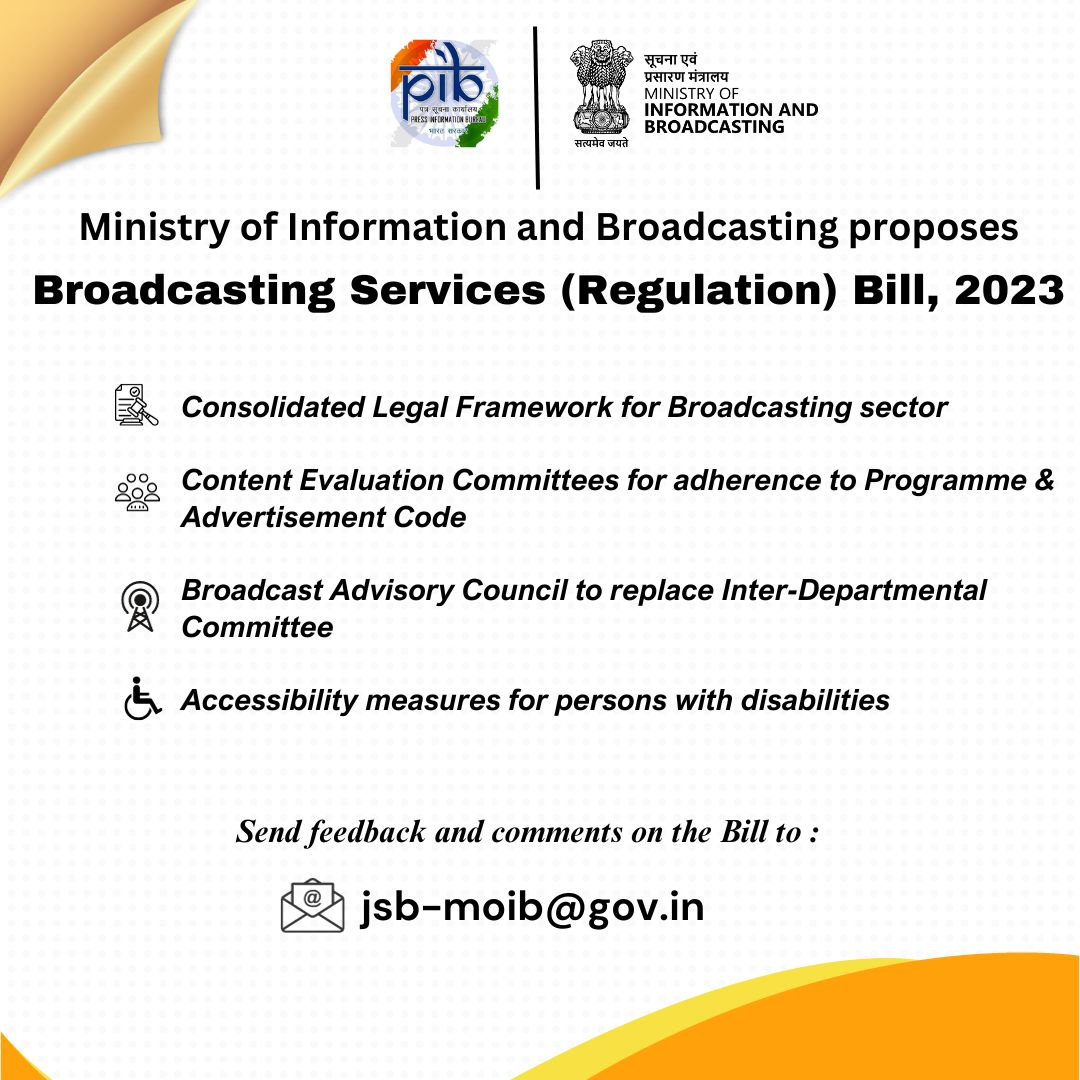
Central idea
India’s Broadcasting Services Bill aims at regulating broadcasting comprehensively, introducing positive steps like audience data transparency and competition in terrestrial broadcasting. However, concerns arise over privacy, jurisdictional conflicts with OTT regulation, and lack of measures on ownership and an independent regulator.
Key Highlights:
- The Broadcasting Services (Regulation) Bill aims to regulate broadcasting comprehensively, marking the third attempt since 1997.
- Positive propositions include obligations for record-keeping, audience measurement transparency, and allowing private actors in terrestrial broadcasting.
Key Concerns:
- Lack of privacy safeguards for subscriber and audience data in data collection practices.
- Inclusion of Over-the-Top (OTT) content suppliers in the definition of broadcasting creates jurisdictional conflicts and poses threats to smaller news outlets.
Positive Provisions Requiring Refinement:
- Obligation for maintaining records of subscriber data.
- Stipulation of a methodology for audience measurement.
- Provision to permit private actors in terrestrial broadcasting.
Apprehensions:
- Expanded definition of broadcasting may limit conditions for journalists and news outlets not part of large television networks.
- The mandate for a ‘Content Evaluation Committee’ to self-certify news programming raises feasibility and desirability concerns.
Crucial Silences in the Bill:
- Lack of measures to assess cross-media and vertical ownership impacts diversity in the news marketplace.
- Absence of provisions for creating an independent broadcast regulator.
Government Empowerment and Intrusive Mechanisms:
- The Bill grants the government leeway to inspect broadcasters without prior intimation, impound equipment, and curtail broadcasting in “public interest.”
- Violations of the Programme Code and Advertisement Code could result in deleting or modifying content.
Concerns Regarding Broadcast Advisory Council:
- Doubts about the Council’s capacity to address grievances raised by over 800 million TV viewers.
- Lack of autonomy for the Council, as the Central government has the ultimate decision-making authority.
Key Terms and Phrases:
- Over-the-Top (OTT) content suppliers
- National Broadcasting Policy
- Content Evaluation Committee
- Vertical integration
- Broadcast Advisory Council.
Key Statements:
- Privacy concerns arise due to the Bill’s lack of guardrails for subscriber and audience data collection practices.
- The absence of measures to assess cross-media and vertical ownership impacts the diversity of news suppliers.
- The Bill’s silence on creating an independent broadcast regulator is a significant omission.
Key Examples and References:
- The Bill is part of a series of attempts to regulate broadcasting, following initiatives in 1997 and 2007.
- TRAI’s ‘National Broadcasting Policy’ proposes including OTT content suppliers in the definition of broadcasting services.
Key Facts and Data:
- Lack of specifics on cross-media and vertical ownership in the Bill impedes diversity in the news marketplace.
- No provisions for an independent broadcast regulator, with the proposal for a ‘Broadcast Advisory Council.’
Critical Analysis:
- The potential positive provisions of the Bill require refinement, particularly concerning privacy protection and oversight bodies for news outlets.
- Intrusive mechanisms grant significant power to the government, posing concerns about press freedom and external pressure on news suppliers.
Way Forward:
- The Bill must address jurisdictional conflicts, incorporate privacy safeguards, and reconsider intrusive provisions for effective and balanced regulation.
- Protection of press freedom and diversity should be prioritized through fine-tuning potentially positive provisions and addressing omissions.
Get an IAS/IPS ranker as your 1: 1 personal mentor for UPSC 2024
Attend Now
Note4Students
From UPSC perspective, the following things are important :
Prelims level: World AIDS Day
Mains level: resilience of sex workers, bar dancers, and trans individuals

Central idea
The article on World AIDS Day sheds light on the neglected lives of Mumbai’s marginalized communities, emphasizing lessons from the HIV epidemic. It calls for grassroots engagement, holistic healthcare solutions, and dignity-centered public health strategies.
Key Highlights:
- Forgotten Narratives: Reflecting on the lives of marginalized communities in Mumbai on World AIDS Day.
- Overlooked Wisdom: Emphasizing the resilience of sex workers, bar dancers, and trans individuals.
- Lessons from the Epidemic: Drawing insights from the HIV epidemic and its impact on these communities.
Key Challenges:
- Information Gap: Sub-standard public awareness efforts leading to misinformation.
- Access Barriers: Discrimination preventing vulnerable communities from accessing healthcare.
- Top-Down Struggles: Ineffectiveness of top-down approaches in understanding diverse high-risk communities.
Key Terms:
- Grassroots Engagement: Involving local communities in decision-making and solutions.
- Holistic Solutions: Addressing issues comprehensively, considering social, economic, and cultural contexts.
- Stigma and Discrimination: Negative attitudes and actions directed towards marginalized groups.
Key Phrases:
- “Forgotten Narratives“: Bringing attention to the overlooked stories of marginalized communities.
- “Grassroots Wisdom”: Advocating for effective health interventions through community involvement.
- “Holistic Approach”: Moving beyond traditional health services for comprehensive solutions.
Key Examples and References:
- Walks in Mumbai’s Shadows: Personal anecdotes from journeys with marginalized groups.
- Voices of Resilience: Quotes sharing insights on life, disease, and discrimination.
- Epidemic Lessons: Reference to valuable knowledge gained during the HIV epidemic.
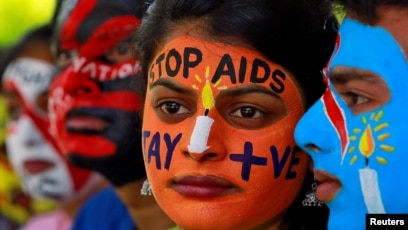
Key Facts:
- Call for Collective Action: Emphasizing the need for public trust and stakeholder involvement.
- Investment in Health: Recognizing the commitment of poor and vulnerable populations to their well-being.
- Activism’s Role: Highlighting activism as essential for equitable and accessible healthcare.
| Key Quotes, Anecdotes, Key Statements for good marks |
| |
| “Even the best strategies falter without grassroots engagement.” |
| “The key to ending an epidemic lay in uniting diverse high-risk groups, combating stigma and discrimination.” |
| “Conversations with these communities illuminated the multidimensional aspects of human sexuality, desire, and behavior change.” |
| “Every issue had human, economic, and social dimensions.” |
| “Activism is the kernel around which change can grow. In India, even today, marginalized groups face mistreatment, and it is activism that can make care equitable and accessible.” |
| “Health must come with dignity and empowerment.” |
| “They certainly gave me life lessons in self-respect, desire, and love.” |
Critical Analysis:
- Emotional Impact: Personal anecdotes and quotes enhance the emotional connection to the narrative.
- Advocacy for Change: Effectively advocates for a shift towards inclusive, grassroots-centered health strategies.
- Learnings from Marginalized: Stresses the importance of learning from marginalized communities for effective healthcare solutions.
Way Forward:
- Dignity-Centered Strategies: Calls for strategies prioritizing dignity, equity, and grassroots engagement.
- Community Learning: Emphasizes the value of understanding and incorporating lessons from marginalized communities in public health interventions.
Get an IAS/IPS ranker as your 1: 1 personal mentor for UPSC 2024
Attend Now
Note4Students
From UPSC perspective, the following things are important :
Prelims level: NA
Mains level: Industry-academia collaborations in Indian higher education are underutilized
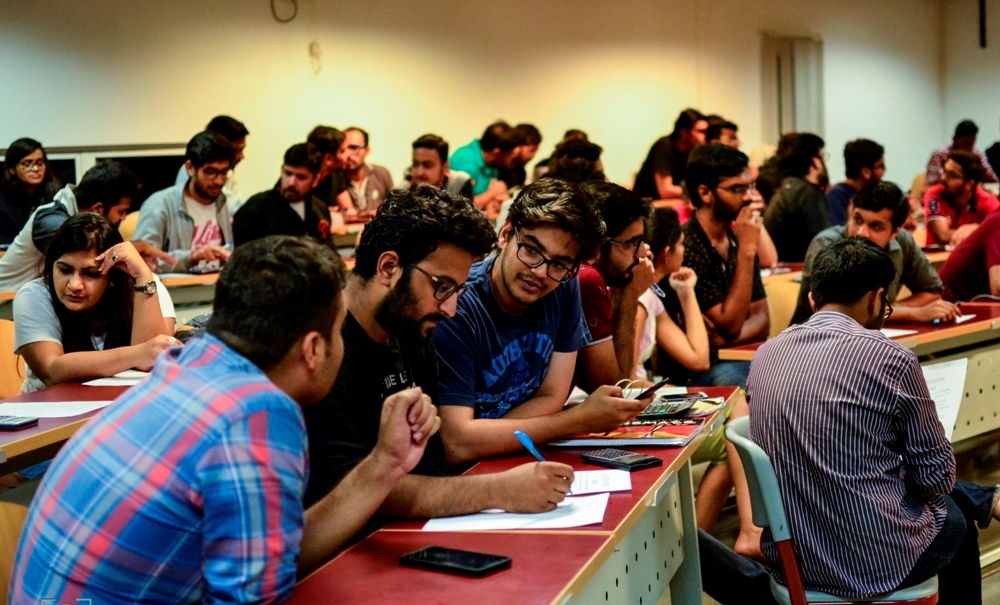
Central idea
The article underscores the underutilization of collaborations between Indian higher education institutions (HEIs) and industries, hindering gains from intellectual property (IP) commercialization. It identifies key challenges such as divergent goals, cultural differences, communication gaps, and the need for trust-building.
Key Highlights:
- Industry-academia collaborations in Indian higher education are underutilized, hindering potential gains from IP commercialization and technology transfers.
- Collaborative success requires shared goals, addressing cultural differences, establishing effective communication, and building trust.
Key Challenges:
- Divergent Goals: Misalignment between HEIs’ focus on theoretical knowledge and industries’ profit-driven practical applications.
- Cultural Differences: Varied approaches to data scrutiny and application development create challenges in collaboration.
- Communication Gaps: Lack of understanding of industry regulatory processes and language differences hinder effective partnerships.
- Building Trust: Fear of research results being published without considering commercial implications, requiring clear agreements.
Key Terms:
- Intellectual Property (IP)
- Technology Transfer
- Collaborative Goals
- Cultural Gap
- Communication Channels
- Trust Building
- Short-term Collaborations
- Long-term Research Collaborations
- Symbiotic Relationship
Key Phrases:
- “Shared goals crucial for collaboration success.”
- “Cultural gap between academia and industry must be bridged.”
- “Effective communication channels and trust-building are essential.”
- “Clear agreements on IP and publication to ensure transparency.“
Key Examples:
- Collaboration between HEI and renewable energy company highlights cultural differences.
- Pharmaceutical company collaboration emphasizes the need for understanding regulatory processes.
- University-tech company collaboration for software application development showcases IP arrangement challenges.
Key Facts:
- Many Indian HEIs miss out on capitalizing on research through IP commercialization.
- Lack of collaboration hampers gains from patents, licensing, and start-up ventures.
Critical Analysis:
- The article highlights crucial challenges in industry-academia collaborations and emphasizes the importance of addressing them for mutual benefit.
- The need for effective communication, trust-building, and clear agreements is appropriately underscored.
Way Forward:
- Foster a culture of open dialogue and flexibility.
- Implement training programs for understanding industry processes.
- Encourage short-term collaborations for quick problem resolution.
- Promote long-term research collaborations for cutting-edge technology development.
- Government funding agencies should announce research grants and encourage joint project proposals.
By addressing these challenges and fostering collaboration, Indian higher education institutions and industries can create a mutually beneficial ecosystem.
Get an IAS/IPS ranker as your 1: 1 personal mentor for UPSC 2024
Attend Now
Note4Students
From UPSC perspective, the following things are important :
Prelims level: 2023 women reservation Act
Mains level: Two routes for women's political empowerment

Central Idea
Political empowerment of women in India faces challenges despite the 2023 women reservation Act, with recent Assembly elections showing inadequate efforts by political parties to field more women candidates.
Key Highlights:
- Two routes for women’s political empowerment: legislative reservation and quotas within political parties.
- Examples from Nepal, Bangladesh, and Pakistan using legislative reservation.
- Countries like Australia, Canada, South Africa, and Sweden achieve women’s representation without legislatively-backed quotas.
- In India, the 2023 Act reserves 33% seats for women in State Assemblies and Parliament.
- Despite the Act, recent Assembly elections show insufficient commitment from political parties.
Key Challenges:
- In Madhya Pradesh, BJP and Congress fielded 28 and 30 women candidates, respectively, out of 230 seats after the Act.
- Telangana sees minimal increase, with BJP and Congress fielding 12 women candidates each out of 119 seats.
- No party in any state reaches the mandated 33% mark for women candidates.
- Despite innovative moves like Congress reserving 40% seats in UP in 2022, overall progress is lacking.
- TMC’s success in Odisha and West Bengal suggests regional parties are more proactive in women’s political representation.
Key Facts and Data:
- Act passed in Lok Sabha with significant majority, only two opposing members.
- In Uttar Pradesh 2022 elections, Congress reserved 40% seats for women, a bold move.
- BJD and TMC’s success in Odisha and West Bengal elections with more women candidates.
Critical Analysis:
- The Act, though commendable, looks good on paper due to its linkage with delimitation after 2026.
- Regional parties like TMC have shown commitment and won with more women candidates, questioning the reluctance of national parties.
Way Forward:
- National and regional parties need to demonstrate genuine commitment to women’s political empowerment by increasing the number of women candidates.
- Learning from the success of regional parties like TMC, other political entities should actively promote and support women in politics.
- Continuous monitoring and public discourse can encourage political parties to fulfill their commitment to women’s representation.
While the enactment of the 2023 women reservation Act is a positive step, recent Assembly elections reveal a gap between legislation and action, with political parties showing reluctance to genuinely empower women in politics. Continuous efforts and monitoring are crucial for bridging this gap and ensuring meaningful representation.
Get an IAS/IPS ranker as your 1: 1 personal mentor for UPSC 2024
Attend Now
Note4Students
From UPSC perspective, the following things are important :
Prelims level: Adolescent Reproductive and Sexual Health Strategy (ARSH) and the National Adolescent Health Programme (RKSK)
Mains level: social justice education
Get an IAS/IPS ranker as your 1: 1 personal mentor for UPSC 2024
Attend Now






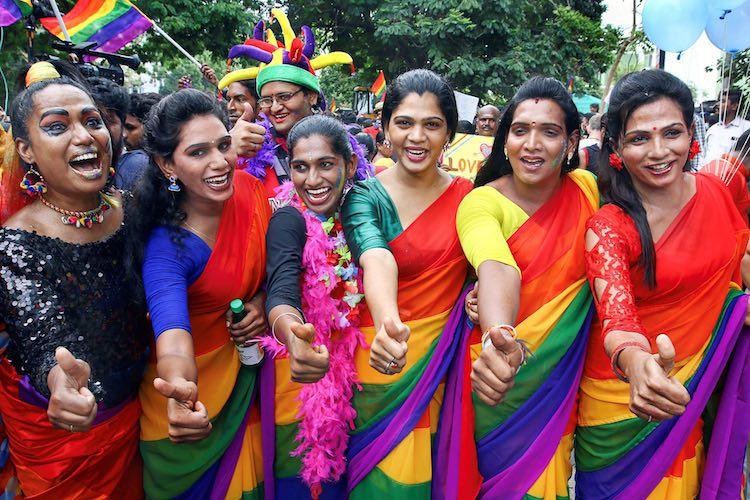
-1596348923.png?auto=format%2Ccompress&fmt=webp&fit=max&format=webp&q=70&w=400&dpr=2)




